| << Chapter < Page | Chapter >> Page > |
Shade of the circle.

The denominator is so we divide the circle into four equal parts ⓐ .
The numerator is so we shade three of the four parts ⓑ .
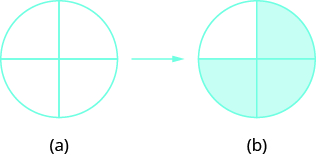
of the circle is shaded.
In [link] and [link] , we used circles and rectangles to model fractions. Fractions can also be modeled as manipulatives called fraction tiles, as shown in [link] . Here, the whole is modeled as one long, undivided rectangular tile. Beneath it are tiles of equal length divided into different numbers of equally sized parts.
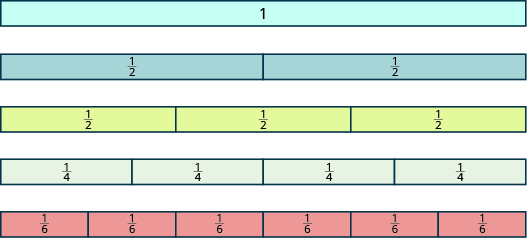
We’ll be using fraction tiles to discover some basic facts about fractions. Refer to [link] to answer the following questions:
How many tiles does it take to make one whole tile?
It takes two halves to make a whole, so two out of two is
How many tiles does it take to make one whole tile?
It takes three thirds, so three out of three is
How many tiles does it take to make one whole tile?
It takes four fourths, so four out of four is
How many tiles does it take to make one whole tile?
It takes six sixths, so six out of six is
What if the whole were divided into equal parts? (We have not shown fraction tiles to represent this, but try to visualize it in your mind.) How many tiles does it take to make one whole tile?
It takes twenty-fourths, so
This leads us to the Property of One .
Any number, except zero, divided by itself is one.
Use fraction circles to make wholes using the following pieces:
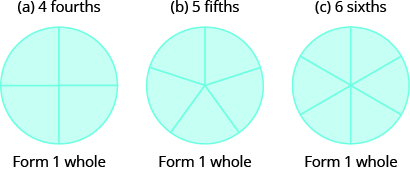
Use fraction circles to make wholes with the following pieces: thirds.
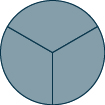
Use fraction circles to make wholes with the following pieces: eighths.
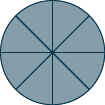
What if we have more fraction pieces than we need for whole? We’ll look at this in the next example.
Use fraction circles to make wholes using the following pieces:
ⓐ halves make whole with half left over.
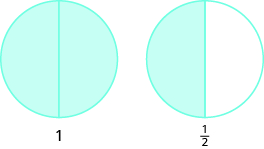
ⓑ fifths make whole with fifths left over.
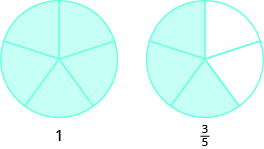
ⓒ thirds make wholes with third left over.
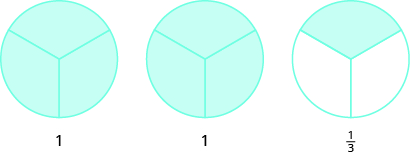
Use fraction circles to make wholes with the following pieces: thirds.
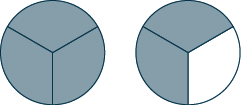
Use fraction circles to make wholes with the following pieces: halves.
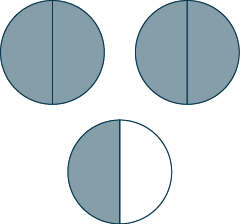
In [link] (b), you had eight equal fifth pieces. You used five of them to make one whole, and you had three fifths left over. Let us use fraction notation to show what happened. You had eight pieces, each of them one fifth, so altogether you had eight fifths, which we can write as The fraction is one whole, plus three fifths, or which is read as one and three-fifths .
The number is called a mixed number. A mixed number consists of a whole number and a fraction.
A mixed number consists of a whole number and a fraction where It is written as follows.
Fractions such as and are called improper fractions. In an improper fraction, the numerator is greater than or equal to the denominator , so its value is greater than or equal to one. When a fraction has a numerator that is smaller than the denominator, it is called a proper fraction, and its value is less than one. Fractions such as and are proper fractions.

Notification Switch
Would you like to follow the 'Prealgebra' conversation and receive update notifications?